Talking to the Visionary Who Made Santa a Business Man
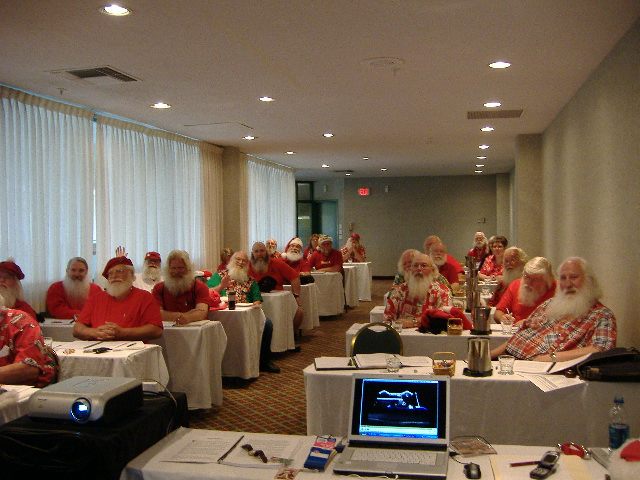
A classroom of Santas-in-training at Tim Connaghan’s Santa school. (Photo: Courtesy Tim Connaghan)
The last person you expect to put you on hold is Santa, but then again, Santa is busy. Really busy. One of the other Santas had a family emergency and can’t make his scheduled appointments. On a weekend. In December.
That’s because Santa is a business, man. As president of the Kringle Group LLC, Tim Connaghan is the main Santa at the center of a Santa empire. Not only is he a year-round professional—even celebrity— Santa who plays the bearded man in the annual Hollywood Christmas Parade, he runs a Santa booking agency, an annual Santa convention and a Santa school. He literally wrote the book on being Santa: Behind the Red Suit: The Business of Santa Claus. And his is just one part of a worldwide Santa economy. The Santa world boasts its own professional associations, a Hall of Fame, an annual congress in Denmark and supports a side-economy of costume makers, stylists and other craftspeople. Dedicated Santas take their job seriously—many even take a popular “Santa Oath”, pledging, in part, to be “dedicated to hearing the secret dreams of both children and adults”.
All of this may sound whimsical and charming, but it translates into dollars.
“A good Santa can make between $5,000 and $10,000 during the holiday season whether it’s through private parties or mall work,” says Connaghan. A top-tier Santa and Mrs. Claus working together could pull in $20,000. And a few fulltime Santas are able to support themselves year-round with a combination of private parties, television appearances, modeling and other work.
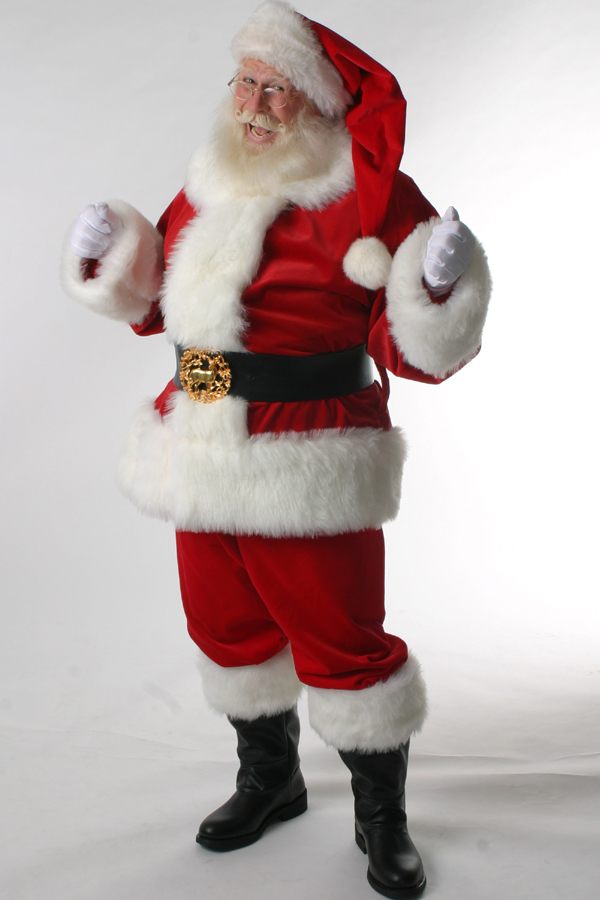
Tim Connaghan as Santa. (Photo: Donna Reinbold)
One is not born a power Santa, though; Connaghan’s first stint at playing Santa Claus was basically an accident. He was with his army unit in Vietnam in December 1969 and stepped into the role with a beard made of shaving cream. A year later, he was working at a department store in Southern California where he was offered a Santa gig that came with a bump over his usual pay.
“So I borrowed a suit, my mom helped me make some padding, I got some reading glasses from Woolworth’s, and I took an eyebrow pencil and put some wrinkles around my eyes, a little rouge on my cheeks and I sat down on the chair,” says Connaghan.
He hid his youthful face behind a theatrical beard that was tended to by a stylist. He loved the job and did it for three years before moving onto careers in journalism, broadcasting and fundraising that spanned decades. Still, he continued to don the beard and suit every Christmas for a variety of events. “Wherever I was, I was still Santa,” he says.
About 18 years ago, he started growing out his beard at the same time he decided to retire. But he wasn’t quite ready to stop working altogether, and put the word out that he was looking for Santa jobs. Work started flowing in. About three years into his semi-Santa retirement, Connaghan was approached by the Amalgamated Order of Real Bearded Santas— a Los Angeles-based group of professional Santas that got together once a month for lunch and to talk shop. When Conngahn joined, there were around 60 members.
“Another few years, we were up to 100 members,” says Connaghan. “And we were also now getting more connections through the internet with Santas around the country. And the mailing list was up to about 300 around the country.”
Connaghan succeeded in an effort to make the group official and start charging dues, but it eventually fell apart due to in-fighting—a period that some call “The Santa Wars” which has earned its share of media attention over the years.
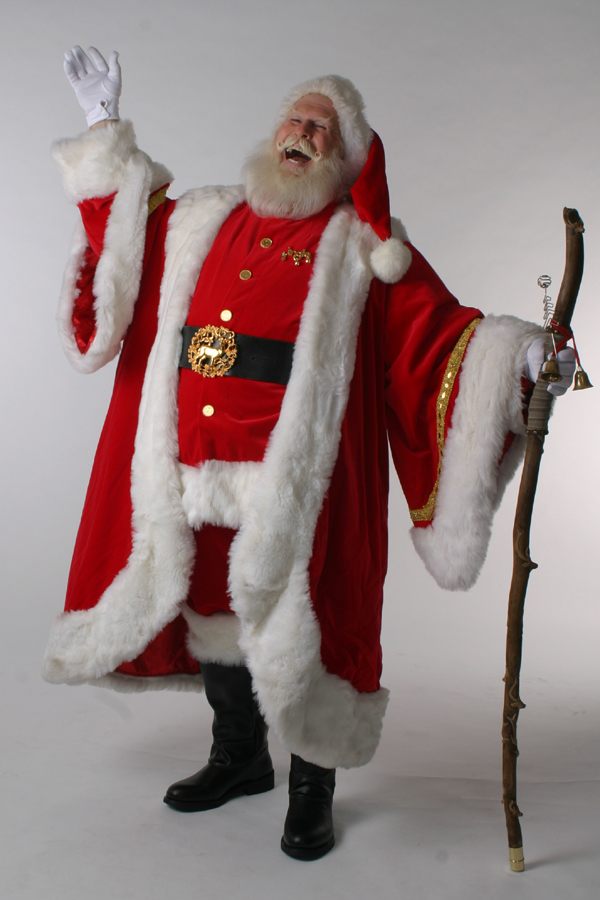
Tim Connaghan in more elaborate Santa robes. (Photo: Donna Reinbold)
But hundreds of Santa organizations remain globally and they serve an important function in the world of professional merrymaking: Networking.
There are worldwide groups such as the International Brotherhood of Bearded Santas, national groups such as Scotland’s The Clan Claus Society and online groups such as ClausNet, the premier clearinghouse for Santa talk. Such organizations have a long tradition—The Benevolent Order of Santa Claus was founded in New York in 1937 to promote a high standard of department store Santas. And then there are the plentiful regional groups, such as Texas’ Lone Star Santas and The Palm Tree Santas in Florida which have local flare—in the case of Florida, think red shorts held up with suspenders. Such organizations are often dues-collecting nonprofits.
Connaghan says regional groups can be a Santa’s most vital resource.
“He gets referrals for work from his local Santas,” says Connaghan. “Or if he needs to find a dry cleaner or a hairdresser or someone to help him, he doesn’t find it by calling the national office. He does it by calling his local buddy.”
In addition to helping Santas connect, such organizations lend freelance Kringles legitimacy. The International Brotherhood of Bearded Santas offers background checks and insurance.
“Whether you’re working in a shopping mall or for a major photo company or doing private work, most Santas today have a couple million dollars in liability insurance just in case a child might trip over their boots or slip off their lap,” says Connaghan.
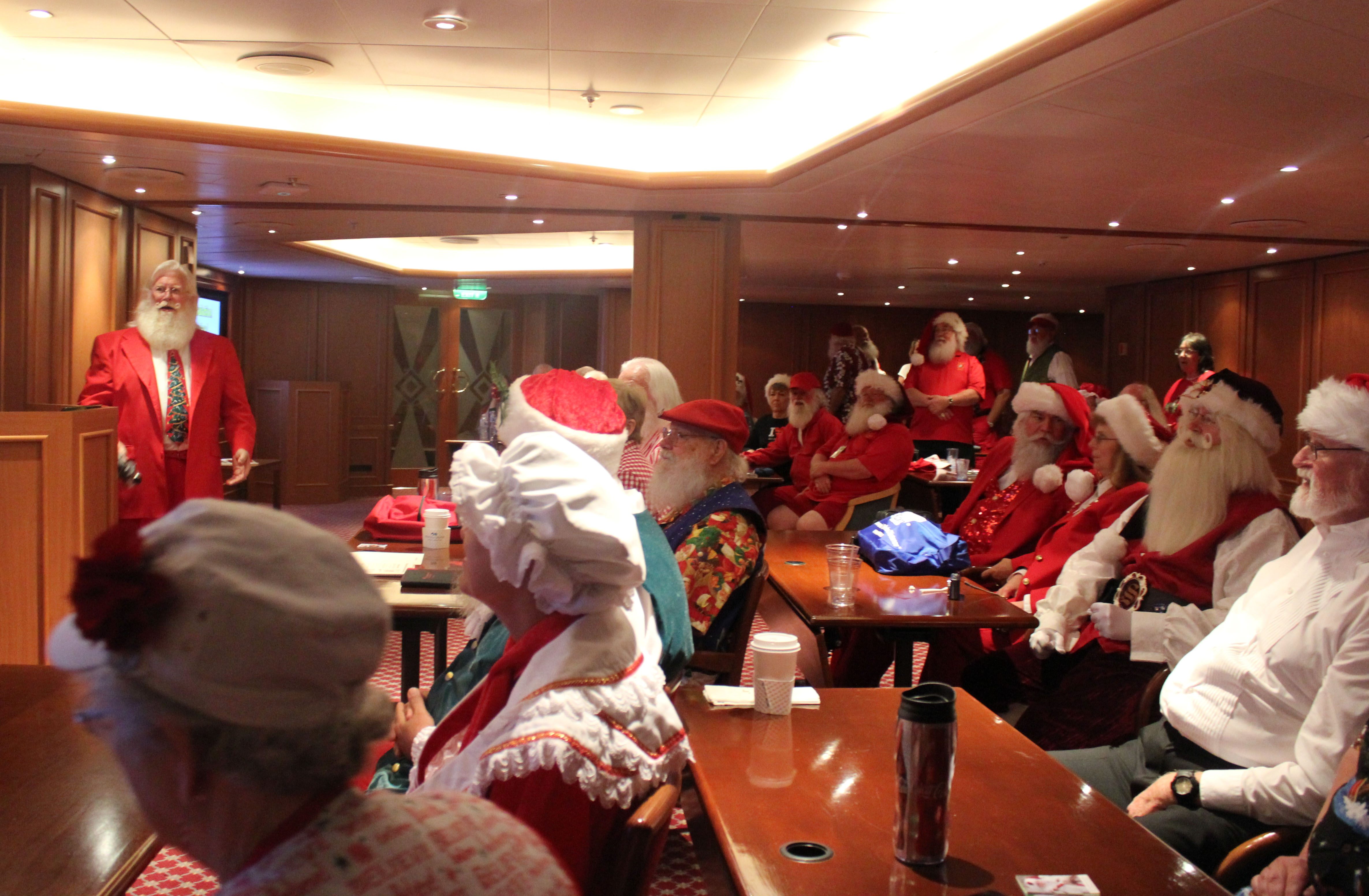
Tim Connaghan teaching Santas. (Photo: Courtesy Tim Connaghan)
Such precautions are just one of the ways the job of being Santa has changed over the years, according to Connaghan. Once upon a time, Santa might hoist a child up and plop them on their lap himself. Now, it’s par for the course for Santas to request that parents do the lap-plopping. This prevents any appearance of impropriety and also safeguards Santa’s back against undue strain. Repetitive motion is just one of the physical challenges of being Santa—hot suits mean being vigilant about hydration and eight hour days of greeting children can be rough on the vocal chords.
These job vagaries aren’t necessarily obvious, which is one of the reasons Connaghan decided to start a school for Santas in 2003. He rented an auditorium at University of Southern California and signed up about 70 Santas and Mrs. Clauses for a daylong seminar. Not long after, an Atlanta, Georgia group asked if he would teach the same curriculum in their city. Connagahn now teaches about 8-10 schools a year and has graduated around 3,200 Santas and Mrs. Clauses. He has even branched out to Santa cruises, tutoring Santas en route to the Caribbean, Alaska, Hawaii and Denmark. Connaghan’s school, the International University of Santa Claus, is one of several, including the Charles W. Howard Santa Claus School in Midland, Michigan which was founded in 1937.
The school addresses topics such as how to talk to children, wardrobe, marketing and the history of Santa. The school offers four “degrees”, the first of which is a Bachelor of SantaClausology. The highest is a Doctor of SantaClausology (PhD), which is conferred after a student attends four schools and presents a dissertation on their specialty. Past topics have included magic and sleighs.
In 2006 Connaghan took the next logical step and convened a convention of Clauses in Branson, Missouri attended by about 500 Santas and Mrs. Clauses. The convention was essentially an expanded version of his school, and it was a success. Connaghan expects around 1,000 Santas and Mrs. Clauses to attend the tenth session in July 2016, which in addition to the usual workshops and networking includes a “Snowlypics”, in which Santas will partake in holiday themed competitions such as tree decorating and a parade. A savvy marketer, Connaghan knows that the optics of a Santa parade in July is wonderful media fodder.
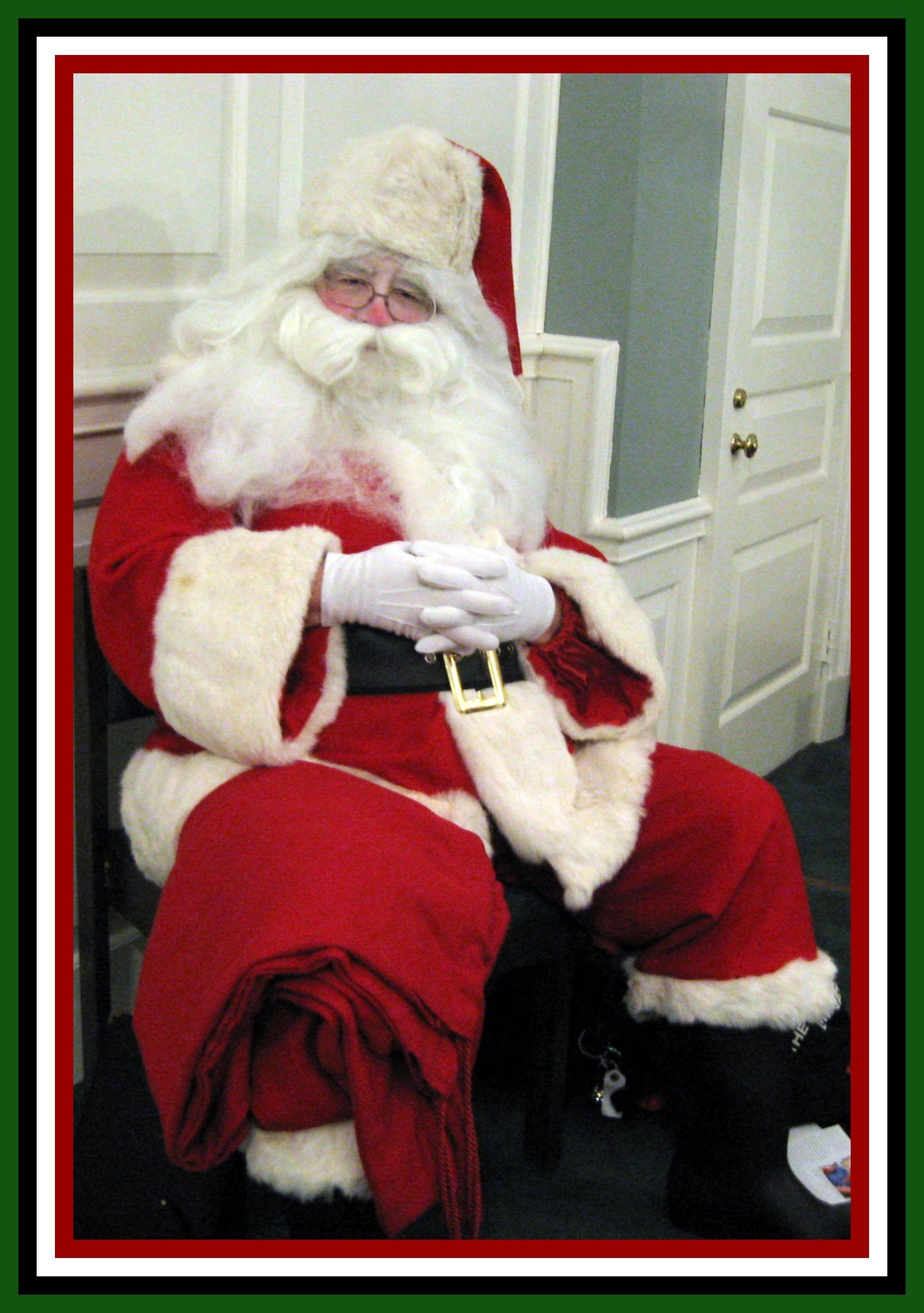
The ultimate goal for Santa school: to book jobs as a Santa Claus. (Photo: Bill Chesney/flickr)
For Santas, whose professions demands a certain level of conformity, marketing is key. Amping up the wardrobe is one way to set yourself apart, according to Connaghan who has his outfits made by Adele’s of Hollywood, a costumer famous for its Santa suits.
“Some Santas do red dickies, slacks, tennis shoes, red Hawaiian shirts,” says Connaghan. “Some have gold trim; we’ve got Swarovski crystals and snowflakes on our chest or on our hat. Santas shouldn’t be too gaudy, but they can have a little accessorizing.
For many Santas, even when the Christmas season ends, being Santa does not.
“When you have a real beard and you look like this year round it’s very hard not to be in character mode all the time,” says Connaghan. “What do you say to a child when they come up to you at Home Depot and you’ve got a big white beard and mustache and hair?”
Connaghan (whose email signature is “With a Twinkle in the eye, I remain yours Santacerely”) is not one to disappoint; he’s always ready to be Santa for his adoring fans.
“It’s kind of like being a rockstar,” he says. “It really is.”









Follow us on Twitter to get the latest on the world's hidden wonders.
Like us on Facebook to get the latest on the world's hidden wonders.
Follow us on Twitter Like us on Facebook